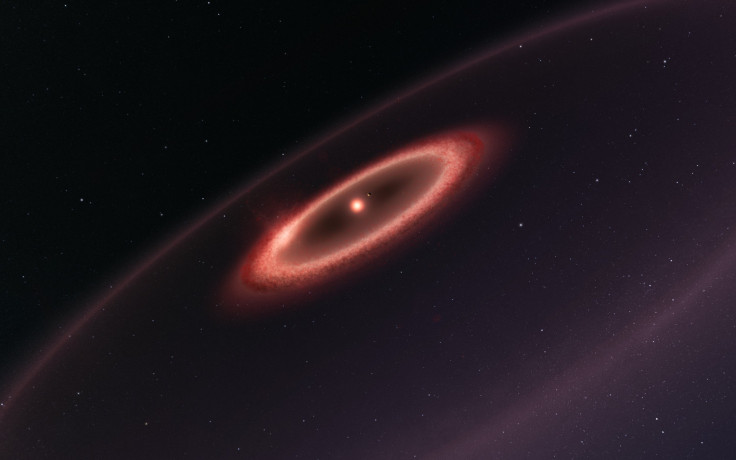Cold Dust Belts Around Proxima Centauri Suggest Elaborate System Of Exoplanets Nearby

Proxima Centauri is a red dwarf about four light-years away, making it the closest star to our solar system, but it was only in 2016 an exoplanet was discovered in orbit around it. New observations by the ALMA Observatory in Chile suggest the closest known planet outside the solar system may not be a lone ranger in its system.
A vast region — between one to found astronomical units (one AU is the distance between Earth and the sun, about 150 million kilometers or 93 million miles) — around Proxima Centauri was found to be emitting a glow that was coming from belts of cold dust surrounding the star. And based on ALMA’s observation data, scientists think an even cooler dust belt farther out could exist, which would mean the star has a more complex planetary system around it than the Earth-sized terrestrial exoplanet Proxima b.
“The dust around Proxima is important because, following the discovery of the terrestrial planet Proxima b, it’s the first indication of the presence of an elaborate planetary system, and not just a single planet, around the star closest to our sun. … Further study may also provide information that might point to the locations of as yet unidentified additional planets,” Guillem Anglada from the Instituto de Astrofísica de Andalucía (CSIC), Spain, said in a statement Friday on the European Southern Observatory’s (ESO) website.
Anglada is the lead author of a paper on the subject that will appear in the Astrophysical Journal Letters. He is not to be confused with Guillem Anglada-Escudé, the astronomer who led the team responsible for discovering Proxima b and a coauthor on the new paper.
The dust found around Proxima Centauri has particles made of rock and ice that range in size from less than a millimeter to several kilometers (miles), and its total mass is about one percent that of Earth. With an estimated temperature of 40 Kelvin (about 390 degrees Fahrenheit below zero), the properties of the inner belt make it similar to the Kuiper belt in our solar system that lies beyond the orbit of Neptune.
Observational data also hinted at the presence of warmer dust around the star at distances below 1 AU. But at the other end, far beyond the 4 AU distance, Anglada and his team infer the presence of another dust belt which is much colder than its inner counterpart. At a distance of about 30 AU from the star, the outer dust belt is thought to be at a temperature of 10 Kelvin (about 440 degrees Fahrenheit below zero).
Both belts, however, are much farther from Proxima Centauri than the star’s only known planet. Proxima b orbits its host star at a distance of a mere four million kilometers.
“These first results show that ALMA can detect dust structures orbiting around Proxima. Further observations will give us a more detailed picture of Proxima's planetary system. In combination with the study of protoplanetary discs around young stars, many of the details of the processes that led to the formation of the Earth and the Solar System about 4600 million years ago will be unveiled,” Pedro Amado, also from CSIC and a coauthor on the paper, said in the statement.
ALMA, or the Atacama Large Millimeter/submillimeter Array, is an interferometer of radio telescopes in the Atacama desert in Chile. An international collaboration among a number of countries, it is the world’s largest and most expensive astronomy project that is on Earth’s surface, and has been fully operational since March 2013.
Titled “ALMA Discovery of Dust Belts Around Proxima Centauri,” the paper can be found on the ESO website ahead of its journal publication.
© Copyright IBTimes 2024. All rights reserved.





















